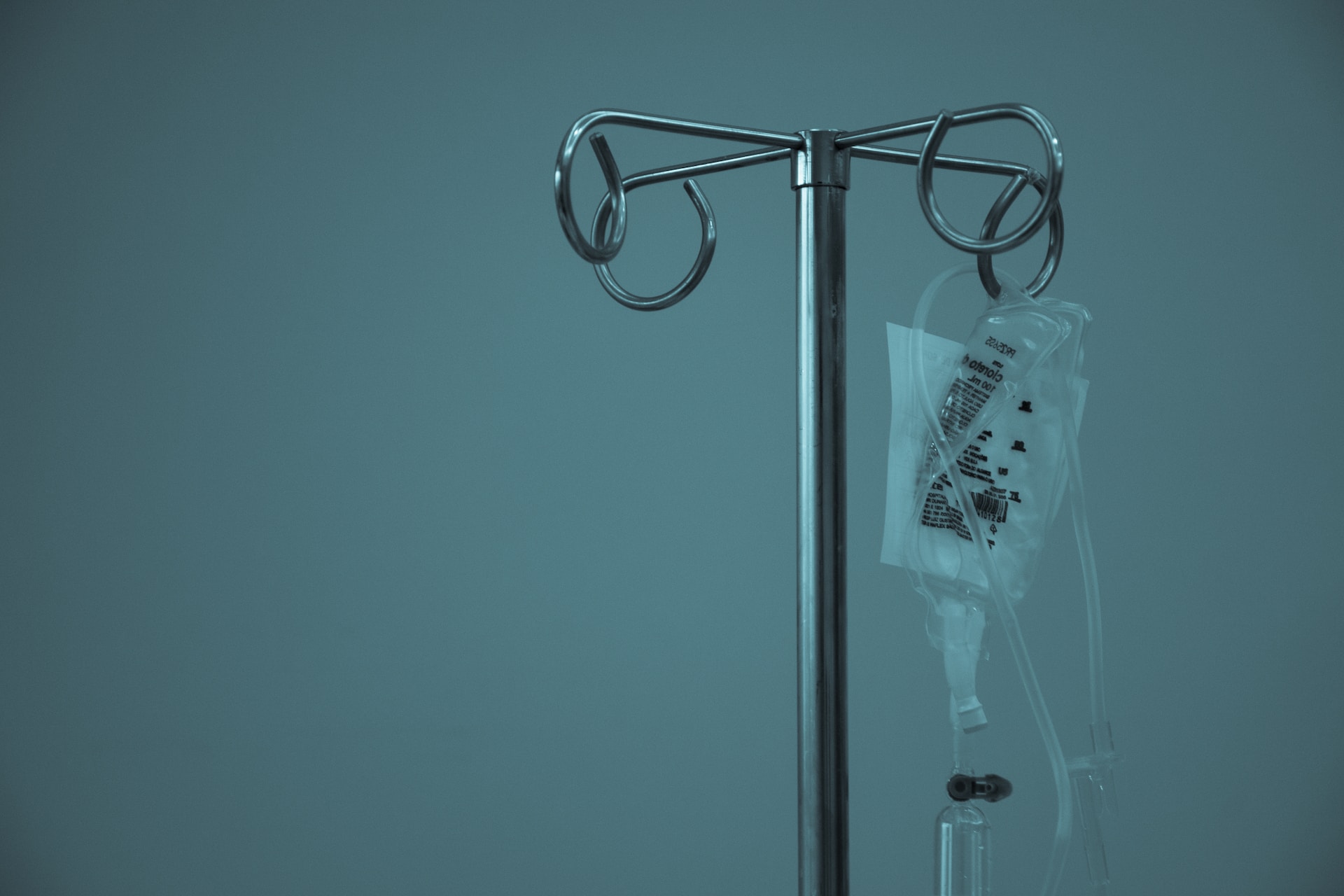Any Grey’s Anatomy or House fan will know IV therapy is a staple of medical treatments. However, you may have also noticed the newest “hydration bar” or lounge in your local strip mall claiming to cure hangovers and chronic fatigue.
These centers offer hydration and specialty vitamin drips that bypass the digestive system to deliver nutrients directly into your bloodstream. But do they work?
Hydration
IV therapy provides fluids directly into the bloodstream. It carries medicine, vitamins and water to the cells more quickly than drinking them orally, which may take longer to reach all parts of your body.
When you’re dehydrated, your energy level drops and your mood may get worse. IV hydration flushes your body with clean fluids and helps improve the function of your liver, kidneys and other organs. Mild dehydration can often be corrected with regular drinking of fluids, but severe dehydration requires hydration IV treatment.
Athletes need hydration after a strenuous workout to help decrease muscle soreness and stiffness and recover faster. IV treatments deliver more hydration in less time than drinking fluids and provide electrolytes, which boost energy levels.
Many IV therapies also contain nutrients that promote wellness, such as antioxidants and amino acids. They help remove toxins from your body, which may improve the appearance of your skin and reduce chronic illnesses, such as heart disease and diabetes.
IV therapy delivers nutrients that support your immune system to keep you healthy and fight off infections. It can reduce the symptoms of common cold and flu and even reduce the duration of a hangover by delivering vitamins and anti-nausea medication.
The way in which your body absorbs fluids and nutrients depends on a number of factors, including the type of IV solution, your age and health, and how much fluid you’ve lost. The most commonly used IV solutions are crystalloid, which have small dissolved molecules that can pass easily into tissues and cells. Examples include normal saline, D5W (dextrose and water), and lactated Ringer’s solution. Another type of IV solution is colloids, which are large molecules that can’t pass through cell membranes and are more likely to stay in the blood vessels.
Electrolytes
The body loses more than water when we sweat, including essential nutrients and electrolytes. While drinking water can help hydrate the body, it doesn’t replenish these vital nutrients. IV therapy delivers hydration and nutrition directly to the bloodstream, bypassing the digestive system.
In addition to hydrating the body, IV therapy can be used to replenish vitamin and mineral deficiencies caused by chronic illnesses, or even some acute conditions such as sepsis and severe diarrhea. It can also deliver certain medications that cannot be administered or absorbed orally, such as chemotherapy drugs.
Some people use IV therapy to support detoxification by flushing harmful toxins from the body, particularly those exposed to environmental or industrial toxins. The treatment can also reduce signs of aging by helping the body eliminate free radicals, which are reactive chemicals that damage cells and promote oxidative stress.
An IV bag contains a mixture of fluids and nutrients that can be tailored to the needs of a patient. Typically, the bag is filled with normal saline solution, which is similar to the composition of human blood plasma and helps restore the body’s fluid balance quickly. It may also contain dextrose solutions, for patients who need additional glucose; lactated Ringer’s solution to replace lost blood volume; and colloids such as albumin or hetastarch for those with very low blood volume.
Getting an IV at a clinic or hospital is safe as long as the procedure is performed by trained medical professionals who follow strict protocols. First, the RN or paramedic will disinfect the skin and locate a vein in the arm—it might feel like a small pinch when the needle goes in. Next, the RN or paramedic will insert the IV, which is usually made of plastic tubing connected to a small tube with a clamp on one end.
Antioxidants

Antioxidants are a group of molecules that neutralize unstable free radicals that are responsible for damage to cells, tissues, and DNA. They do this by stealing electrons from free radicals, which makes them less stable, halting the chain reaction that leads to cell and tissue damage.
IV therapy delivers antioxidants directly into the bloodstream via intravenous infusion, bypassing the digestive system and allowing for maximum absorption. These IV drips typically contain high doses of antioxidants such as vitamin C and glutathione, which is known for its ability to detoxify the body and boost immune function.
These ingredients may also include minerals such as magnesium, calcium, zinc and selenium that have been shown to support healthy immune function. During an antioxidant-infused IV session, you will be comfortably seated in a relaxing setting while a healthcare professional inserts a needle into your vein to administer the treatment. You can read, listen to music or relax while your body absorbs the nutrients and antioxidants infused into it.
Whether you want to increase your energy levels after a strenuous workout or sober up quickly from a night of drinking, an antioxidant-infused IV will help you achieve your goals. Just be sure to check out the credentials of the person or company you are relying on, as complications like air embolism can occur when the procedure is not administered properly. The best way to prevent these risks is by working with a licensed RN or paramedic who knows how to assess your medical history and ensure you are a good candidate for the procedure. They will also know how much hydration you should have before starting the treatment. Hydration is key when it comes to receiving the most benefits from any antioxidant-infused IV treatment.
Vitamins
Many of us have heard about IV therapy and its ability to hydrate your body, boost immunity, make you look younger and improve the quality of your skin, relieve migraines, help with hangovers, alleviate nausea, and more. These benefits have led to the treatment becoming popular at naturopathic treatment clinics, spas, and even wellness centers.
IV therapy delivers vitamins and minerals directly into your bloodstream, bypassing the digestive system to absorb them more quickly. This means you can experience symptom relief within minutes. It is also possible to add various medications to an IV drip, making it easy to address everything from cold and flu symptoms to muscle pain, nausea, and hangovers.
The most important vitamin to get through IV therapy is vitamin C, a powerful antioxidant that is known for its ability to strengthen the immune system and fight stress. Combined with vitamin B12, which plays a role in cell metabolism and reducing anxiety, this combination of vitamins can help you feel more energized and healthy.
Another vitamin that is commonly included in IV treatments is magnesium, which supports the nervous and muscular systems. It can reduce feelings of anxiety and is useful for promoting healthy sleep patterns. You can also add vitamin D to your IV treatment, which is known for its role in fighting inflammation and boosting the immune system.
It is best to use an IV at a reputable clinic where you can be assured that the treatment will be administered by a trained medical professional. You should not use an IV at home without a doctor’s supervision, because there is a risk of infection and complications from using a non-sterile needle.
Minerals
Unlike many vitamin supplements, which only deliver half of their active ingredients to the body, IV therapy directly delivers fluids, vitamins, and minerals into the bloodstream for 100% absorption. Some of the most popular and common IV fluid blends include Myers’ Cocktail, Hangover Rescue, Cold and Flu Relief, Anti-Anxiety, Anti-Inflammatory, Energy Boost, Immune Boost, and Relaxing Sleep Aid.
IV fluids are delivered to the bloodstream via a small needle that is placed into a vein, usually in the arm. Once the fluids are infused into your body, they begin to circulate throughout the bloodstream where they will eventually be metabolized and excreted. Depending on your IV therapy treatment plan, you may experience mild to moderate discomfort at the site of needle insertion.
Some of the most important nutrients for IV therapy include amino acids, B vitamins, magnesium, zinc, and calcium. These nutrients can help regulate the contracting and dilating of your blood vessels, which helps to prevent high or low blood pressure. In addition, the amino acids arginine and nitric oxide are thought to promote heart health by decreasing high blood pressure by relaxing your blood vessels.
You will typically receive your IV therapy in a medical facility or at a private home from a concierge service. You may be asked to sit or lie down while the IV drips are delivered into your bloodstream, though some services offer mobile units for those who would rather not leave their homes or work. When the IV therapy session is complete, the nurse will remove the needle from your arm and apply a bandage. This will help to protect the site of insertion and prevent irritation or infection.





